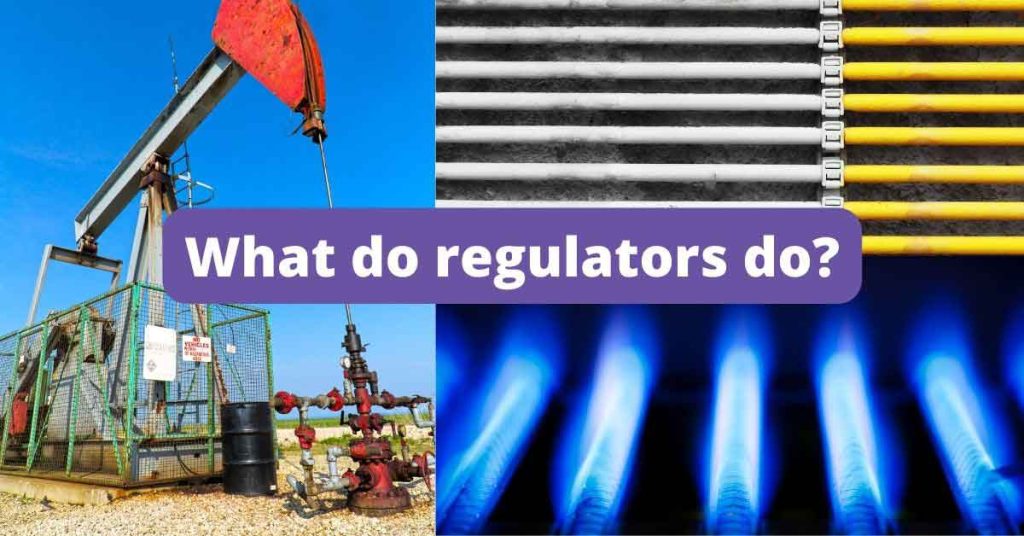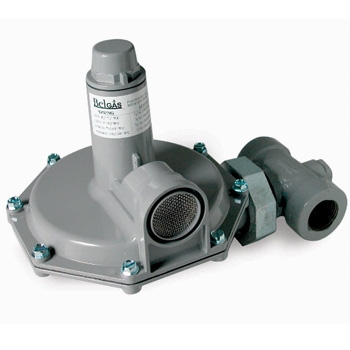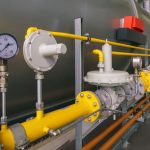What do natural gas regulators do?
What do natural gas regulators do? Throughout the gas delivery system, from the wellhead to the stove burner, regulators adjust the pressure to ensure safety. In this back-to-basics entry, I discuss why natural gas regulators are used in a delivery system and how the regulator works.
If you want to know how to size your regulator, visit here.
Natural Gas Regulators
After natural gas moves out of the well into gathering and transmission systems and gate stations, it ultimately enters distribution lines (or “mains”).
While gas is in the distribution system, regulators control the flow from higher pressure to lower pressure. Regulators sense if the pressure in a line drops below a specified set point and opens, allowing more gas to flow. On the other hand, if demand rises above a set point, the regulator will close to adjust the downstream pressure.
When natural gas leaves the main, it travels through a “service line” to reach homes or businesses. This service line is likely to be polyethylene, perhaps an inch or less in diameter, and ranges from about 60 PSI to ¼ PSI. Once the gas reaches the home or business meter, it passes through another residential or light commercial regulator to reduce the pressure under ¼ PSI and is measured in inches of water column. Within a building or house, there will be line pressure and appliance regulators.
How does a gas pressure regulator work?
A gas pressure regulator operates on the principle of pressure reduction. Let’s delve into how it works:
1. Components:
- Valve: The regulator has a valve controlling the gas flow.
- Spring-Loaded Diaphragm: This diaphragm is connected to the valve and adjusts its position based on pressure changes.
- Pressure Sensor: The regulator senses and maintains the desired output pressure.
2. Gas Flow Control:
- Gas enters the regulator’s chamber, exerting pressure on the diaphragm.
- The spring determines the force against the diaphragm.
- As the diaphragm moves upward (controlled by the spring), it allows a specific gas flow from the source to the appliance or device.
3. Adjustment:
- The control knob lets you adjust the rate of flow and pressure.
- Turning clockwise pushes the diaphragm down, allowing more gas into the valve.
- Turning counter-clockwise reduces the fuel amount and pressure.
4. External Factors:
- Atmospheric pressure (based on elevation above sea level) affects gas pressure.
- The regulator senses both upstream and downstream pressure to maintain stability.
Remember, gas regulators ensure safe and efficient gas flow, preventing catastrophic explosions or equipment malfunction.
Linc Energy Systems sells Belgas, Dungs, Maxitrol, Honeywell, and Itron regulators.






What happens if high pressure regulator is used on low pressure setting
Russell,
As long as the inlet pressure is higher than the outlet pressure the regulator will function, but the amount of natural gas that will flow through it will be greatly reduced and the outlet pressure will tend to drop off sooner.